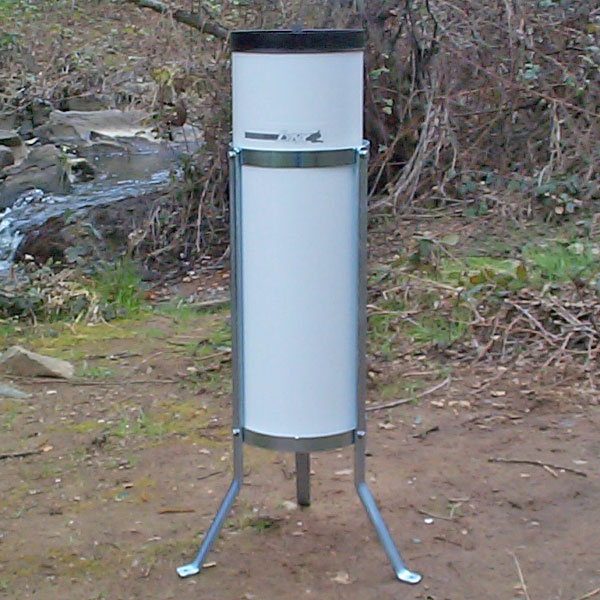How a Rain Gauge Can Enhance Your Understanding of Local Environment Patterns
Unveiling the Science Behind Rainfall Gauges: Exactly How These Gadgets Play a Crucial Function in Climate Study and Ecological Tracking
Rainfall assesses, apparently straightforward gadgets, hold a profound significance in the world of climate research study and ecological monitoring. As we peel off back the layers of this scientific shroud surrounding rain gauges, we discover a globe where accuracy, information precision, and thorough monitoring merge to reveal a much deeper understanding of our changing environment and its effect on the world.
Value of Rainfall Gauges
Rain determines play a vital role in surveillance and gauging rainfall degrees, giving essential data for climate research and analysis. These gadgets are basic in quantifying the quantity of rains that happens in a specific area over a specific period. By gathering and measuring rain, rainfall gauges offer important insights right into the circulation and strength of precipitation, aiding meteorologists, hydrologists, and climatologists in comprehending climate patterns and patterns.
Furthermore, long-term data collected from rainfall determines helps in evaluating environment adjustment influences and patterns, adding dramatically to scientific study and decision-making processes. In significance, rain determines serve as essential devices in the field of meteorology and environmental science, playing a crucial function in progressing our understanding of weather and climate dynamics.
Types of Rainfall Scales

Functionality and Procedure
In the world of environment research study and meteorological research studies, the effectiveness of rainfall assesses hinge on their elaborate functionality and accurate operational systems. Rain evaluates are designed to precisely measure the amount of precipitation that drops over a particular location during a collection duration. These devices commonly include a funnel that accumulates rainwater and channels it right into a measuring tube. The determining tube is noted with calibrated dimensions that permit the specific metrology of rainfall.
The capability of rainfall assesses is based on the concept of measuring and accumulating rain image source in a standardized manner. This collected information is crucial for understanding local weather condition patterns, tracking long-lasting climate trends, and examining ecological impacts. To make certain accurate measurements, rainfall assesses requirement to be strategically placed in open areas far from blockages such as buildings or trees that can disrupt the collection procedure.
The operational facet of rainfall assesses includes normal upkeep to avoid particles accumulation, calibration checks to preserve dimension accuracy, and data recording for evaluation (rain gauge). Overall, the capability and operation of rainfall gauges are vital for gathering reputable rainfall information important to environment study and ecological tracking
Role in Environment Study
Offered the essential value of accurate rainfall dimensions in recognizing weather condition patterns and ecological influences, the role of rainfall determines in environment research is vital. Rain determines give necessary data for environment research study by quantifying the quantity of precipitation that drops over a particular location throughout an offered duration. This data is important for keeping track of long-lasting fads in precipitation patterns, examining the influence of environment modification on rains circulation, and improving environment versions.

Environment researchers utilize information gathered from rain determines to examine variations in precipitation levels, identify local environment fads, and review the performance of water resource monitoring methods. By comparing historic rainfall information with current measurements, researchers can identify shifts in precipitation patterns, such as adjustments in the frequency or intensity of rainfall occasions. This info is important for comprehending exactly how environment modification is affecting precipitation dynamics and can help policymakers make notified choices concerning adaptation and reduction strategies.
Applications in Environmental Surveillance

In flood projecting, rainfall gauge information assists to track rainfall strength and circulation, permitting authorities to issue timely cautions and take necessary procedures to reduce flood risks (rain gauge). Dry spell surveillance depends on rain gauge information to examine moisture you can try this out levels in the dirt and track rainfall deficiencies, aiding in the identification of drought-prone locations and the application of dry spell response approaches
Furthermore, rainfall scale data plays an essential duty in water source management by providing information on water availability and usage trends. This data is used to make enlightened choices relating to water allotment, preservation measures, and sustainable water source planning. Additionally, in farming, rainfall gauge data helps farmers in enhancing watering routines, plant option, my review here and overall farm management techniques based on neighborhood precipitation patterns. On the whole, rainfall evaluates are indispensable devices in ecological tracking, supplying useful understandings that contribute to notified decision-making and sustainable resource monitoring.
Verdict
To conclude, rainfall evaluates are essential tools for gauging rainfall, offering useful information for climate study and ecological tracking. With different types and functionalities, rain evaluates play an essential duty in comprehending precipitation patterns and their impact on the setting. By precisely measuring rainfall, these tools add to the innovation of scientific expertise and aid in making educated choices pertaining to water resource monitoring and disaster readiness.
Rainfall determines play an important role in tracking and measuring precipitation levels, giving essential data for environment research study and evaluation. The basic rain scale, recognized as the "tipping container" gauge, is one of the most commonly utilized devices. Ultrasonic rain evaluates use sound waves to detect the presence of rain, providing real-time data on precipitation levels.Environment scientists use information gathered from rainfall evaluates to examine variants in rainfall degrees, recognize local climate patterns, and assess the effectiveness of water resource management techniques.In conclusion, rainfall determines are crucial tools for determining precipitation, providing important information for environment study and environmental tracking.